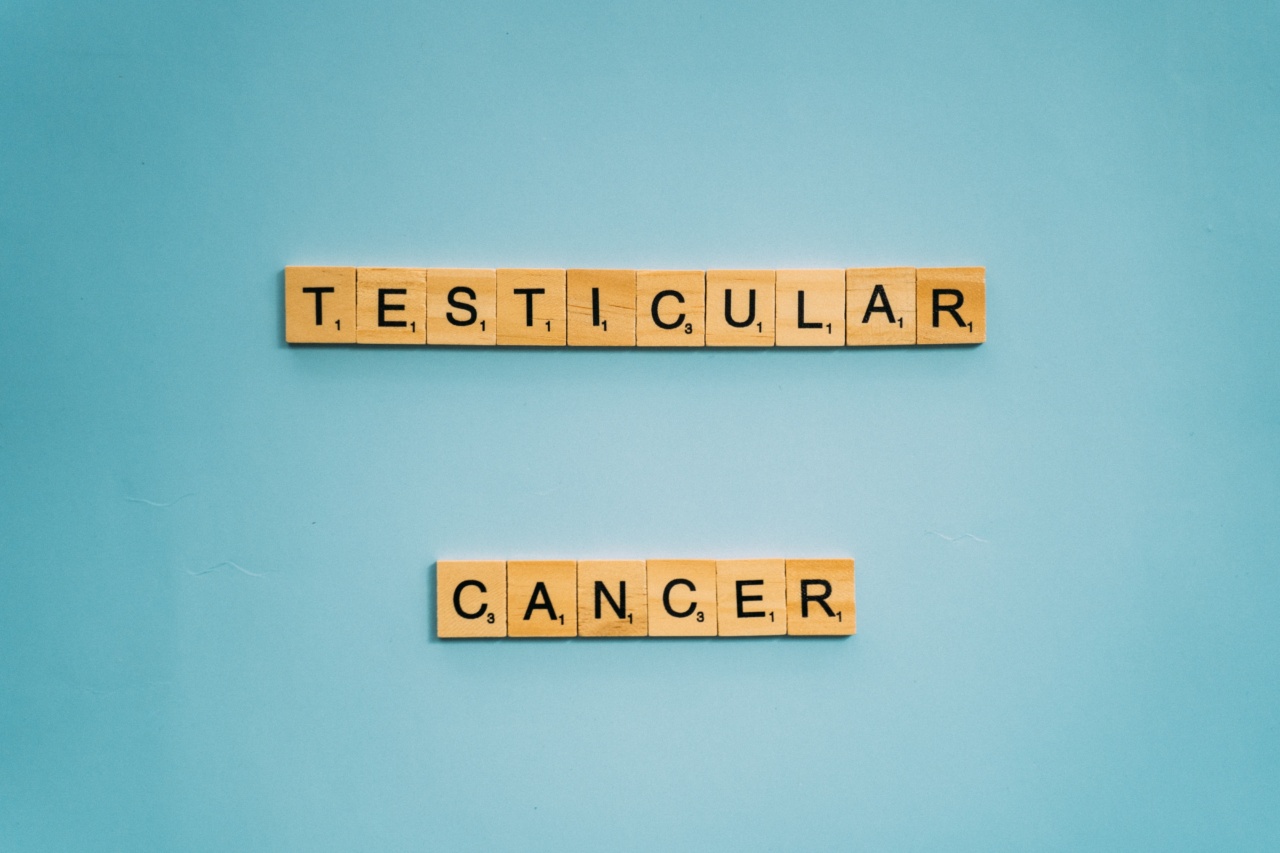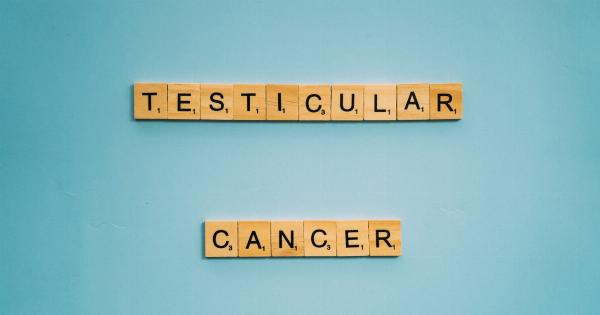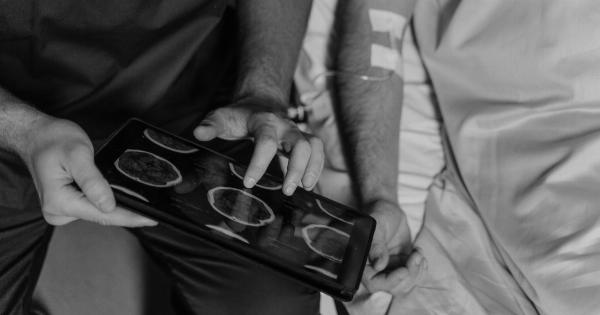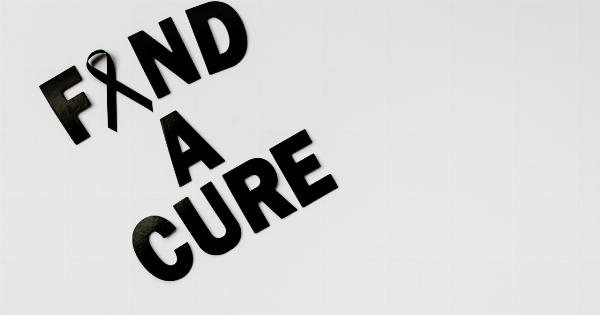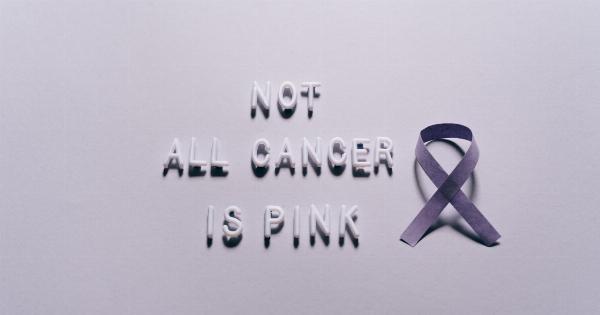Testicular cancer is a rare but potentially serious form of cancer that affects the testicles, the male reproductive glands located in the scrotum.
While this type of cancer is relatively uncommon compared to other forms of cancer, it is important to be aware of the symptoms and risk factors associated with it. Early detection and treatment can significantly improve the chances of a successful outcome. In this article, we will discuss the symptoms of testicular cancer that you should be aware of, as well as some important information about the condition.
Risk Factors for Testicular Cancer
Although testicular cancer can occur in males of any age, it is most commonly diagnosed in young and middle-aged men, typically between the ages of 15 and 35.
There are several risk factors that have been associated with an increased likelihood of developing testicular cancer:.
1. Undescended Testicle: Men who have had an undescended testicle (cryptorchidism) are at higher risk for testicular cancer. This is a condition in which one or both testicles fail to move into the scrotum before birth.
2. Family History: Having a close relative, such as a father or brother, with a history of testicular cancer increases the risk.
3. Abnormal Testicle Development: Certain conditions that affect the development of the testicles, such as Klinefelter syndrome, can increase the risk of testicular cancer.
4. Personal History: If you have had testicular cancer in one testicle, you have an increased risk of developing it in the other testicle.
5. Ethnicity: Testicular cancer is more common in white men compared to men of other racial and ethnic backgrounds.
Common Symptoms of Testicular Cancer
In many cases, testicular cancer may not cause any noticeable symptoms in its early stages. However, as the cancer progresses, the following symptoms may occur:.
1. Lump or Swelling: The most common symptom of testicular cancer is a painless lump or swelling in one or both testicles. This lump may be small or large and can feel hard or soft.
2. Pain or Discomfort: Some men may experience a dull ache, pain, or discomfort in the scrotum or testicles. This pain may radiate to the lower abdomen or groin area.
3. Heaviness: A feeling of heaviness in the scrotum may be experienced due to the presence of a tumor.
4. Changes in Testicular Size or Shape: The affected testicle may become larger or smaller, or it may change shape. Some men may also notice swelling or lumps in the scrotum.
5. Breast Tenderness or Growth: In rare cases, testicular cancer may produce hormones that cause breast tenderness or growth, a condition called gynecomastia.
It is important to note that these symptoms can also be caused by other conditions unrelated to cancer, such as testicular injury or infection.
However, if you experience any of these symptoms, it is essential to consult a healthcare professional for proper diagnosis and treatment.
Diagnosing Testicular Cancer
If testicular cancer is suspected based on symptoms or physical examination, further tests will be conducted to confirm the diagnosis. These may include:.
1. Ultrasound: An ultrasound uses sound waves to create images of the testicles. This can help determine the presence of any abnormal growths or tumors.
2. Blood Tests: Blood tests can be performed to measure the levels of certain substances, such as tumor markers, which may indicate the presence of testicular cancer.
3. Biopsy: In some cases, a biopsy may be recommended to examine a sample of the testicular tissue for the presence of cancer cells. This is typically done by surgically removing the affected testicle.
Treatment Options for Testicular Cancer
The treatment options for testicular cancer depend on various factors, including the stage and type of cancer. The main treatment modalities for testicular cancer include:.
1. Surgery: In most cases, the affected testicle is surgically removed through a procedure called radical inguinal orchiectomy.
This is the primary treatment and can also serve as a diagnostic measure to determine the extent and nature of the cancer.
2. Radiation Therapy: Radiation therapy involves the use of high-energy X-rays or other forms of radiation to kill cancer cells. It may be used following surgery to destroy any remaining cancer cells in the body.
3. Chemotherapy: Chemotherapy uses drugs to kill cancer cells throughout the body. It is typically recommended for advanced or metastatic testicular cancer or when there is a high risk of recurrence.
4. Surveillance: In some cases, if the cancer is in its early stages and has not spread beyond the testicles, active surveillance or “watchful waiting” may be recommended.
Regular medical check-ups and imaging tests will be conducted to monitor the progression of the cancer.
5. Targeted Therapy: Targeted therapy drugs are designed to specifically target certain cancer cells or their growth pathways. These drugs may be used in some cases of advanced testicular cancer.
Follow-Up Care and Prognosis
After completing the initial treatment, regular follow-up visits with the healthcare team are essential to monitor the progress and detect any signs of recurrence. These visits may involve physical examinations, blood tests, and imaging scans.
The long-term outlook for testicular cancer is generally favorable, especially when diagnosed and treated early. The overall survival rate for testicular cancer is high, with cure rates exceeding 95% for localized tumors.
Conclusion
Testicular cancer is a relatively rare form of cancer that primarily affects young and middle-aged men. While the symptoms may not always be apparent, it is important to be aware of any changes or abnormalities in the testicles.
If you experience any concerning symptoms, it is crucial to seek medical attention promptly. Regular self-examinations and routine check-ups can contribute to early detection and successful treatment. Remember, knowledge about testicular cancer symptoms can save lives.
